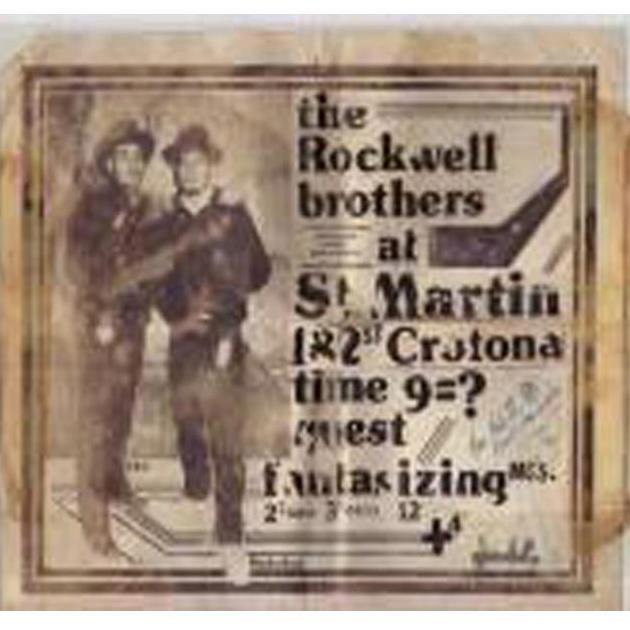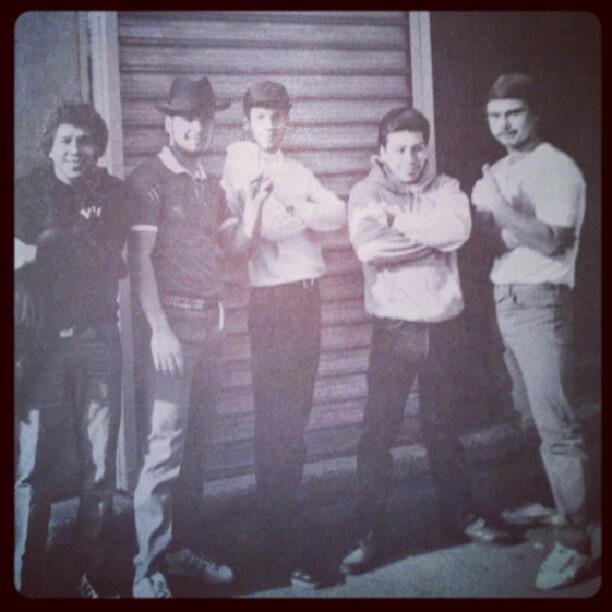Rockwell Association History
They were a Puerto Rican crew when communication between blacks and Puerto Ricans was somewhat limited.
ROCKWELL ASSOCIATION HISTORY...
 In 1976 Tito and Macho were members of the RCA Rockmasters, a crew of Puerto Rican teenagers based near the Tremont section of the Bronx around 180th street and Southern Boulevard. Like many crews during the period, RCA started as a group of fun-loving disco dancers. Unfortunately, as the group got larger, they began acting more like a street gang. Tito and macho were not comfortable being in a gang, so they convinced several members to quit RCA and form their own crew. "One night we all went to Belmont Park," said Tito. "We made a big pile with our RCA sweatshirts and burned them. Then we started thinking about a new name. I said, 'how about "Rockwell"?' Everybody liked that, so we became the Rockwell Association".
In 1976 Tito and Macho were members of the RCA Rockmasters, a crew of Puerto Rican teenagers based near the Tremont section of the Bronx around 180th street and Southern Boulevard. Like many crews during the period, RCA started as a group of fun-loving disco dancers. Unfortunately, as the group got larger, they began acting more like a street gang. Tito and macho were not comfortable being in a gang, so they convinced several members to quit RCA and form their own crew. "One night we all went to Belmont Park," said Tito. "We made a big pile with our RCA sweatshirts and burned them. Then we started thinking about a new name. I said, 'how about "Rockwell"?' Everybody liked that, so we became the Rockwell Association".
The group included Willie, Carlos, Victor, Hector, Pops, Rubberband, George, and Shorty. They were a Puerto Rican crew when communication between blacks and Puerto Ricans was somewhat limited. Both groups were into music and dance, both threw block parties, but the similarities stopped there. Puerto Ricans played disco music, while blacks played hard-core funk. Puerto Ricans dressed in flower-print shirts and pointy-toe shoes and danced the Hustle, while blacks wore bell-bottoms and sneakers while breakdancing. However, around 1977, a Puerto Rican deejay named Charlie Chase helped bring about a merger of the two styles.
 "From 1974 to 1977 I was in a band at Alfred E. Smith High School", said Charlie Chase. But then I got interested in deejaying. There was a crew around my house called the Monterey Crew. They were the first crew that I saw getting into the b-boy style. They didn't do any fancy cutting with their music, but they played 'Just Begun.' So, I started doing a little degassing. My friends would say, 'Okay Charlie, here's your turn to play your black music,' and I would get fifteen minutes to do my thing. When I was on the set, everybody would dance and my friends couldn't understand why."
"From 1974 to 1977 I was in a band at Alfred E. Smith High School", said Charlie Chase. But then I got interested in deejaying. There was a crew around my house called the Monterey Crew. They were the first crew that I saw getting into the b-boy style. They didn't do any fancy cutting with their music, but they played 'Just Begun.' So, I started doing a little degassing. My friends would say, 'Okay Charlie, here's your turn to play your black music,' and I would get fifteen minutes to do my thing. When I was on the set, everybody would dance and my friends couldn't understand why."
Willie Will was 16 at the time and had just learned to break dance. "Pops taught me," he said, referring to a friend a year younger than himself. "He learned from the Zulus. They had one dancer
named Chopper who was real good. Breaking was like a hobby. We'd go into the hallway and practice until three or four in the morning. Get drunk. Fight. There was nothing else to do. I don't know where the spinning came from, but it was out in 1976. The Zulus had footwork, headspins, backspins. We used to break on the concrete in Belmont Park. If you did a backspin, you'd only spin around once or twice. Everybody was in crews and the crews would break against each other. First the whole crew would dance and then the best two from each crew would go down".
After developing the dance for over five years, many blacks grew tired of breaking and had stopped by 1978. Some got into the Hustle or the Freak. Others did the Electric Boogie, a robotic mimelike dance popular in California and down South. However, the Puerto Ricans were just getting breaking and had no intentions of giving it up. Saint Martin's, a Catholic Church located on Crotona Avenue, began sponsoring breaking battles in their gymnasium with the local priests acting as judges. Well-known crews participating in the battles included The Disco Kids (TDK), the Apache Crew, Star Child La Rock, and TBB.
Source: SOLO 138